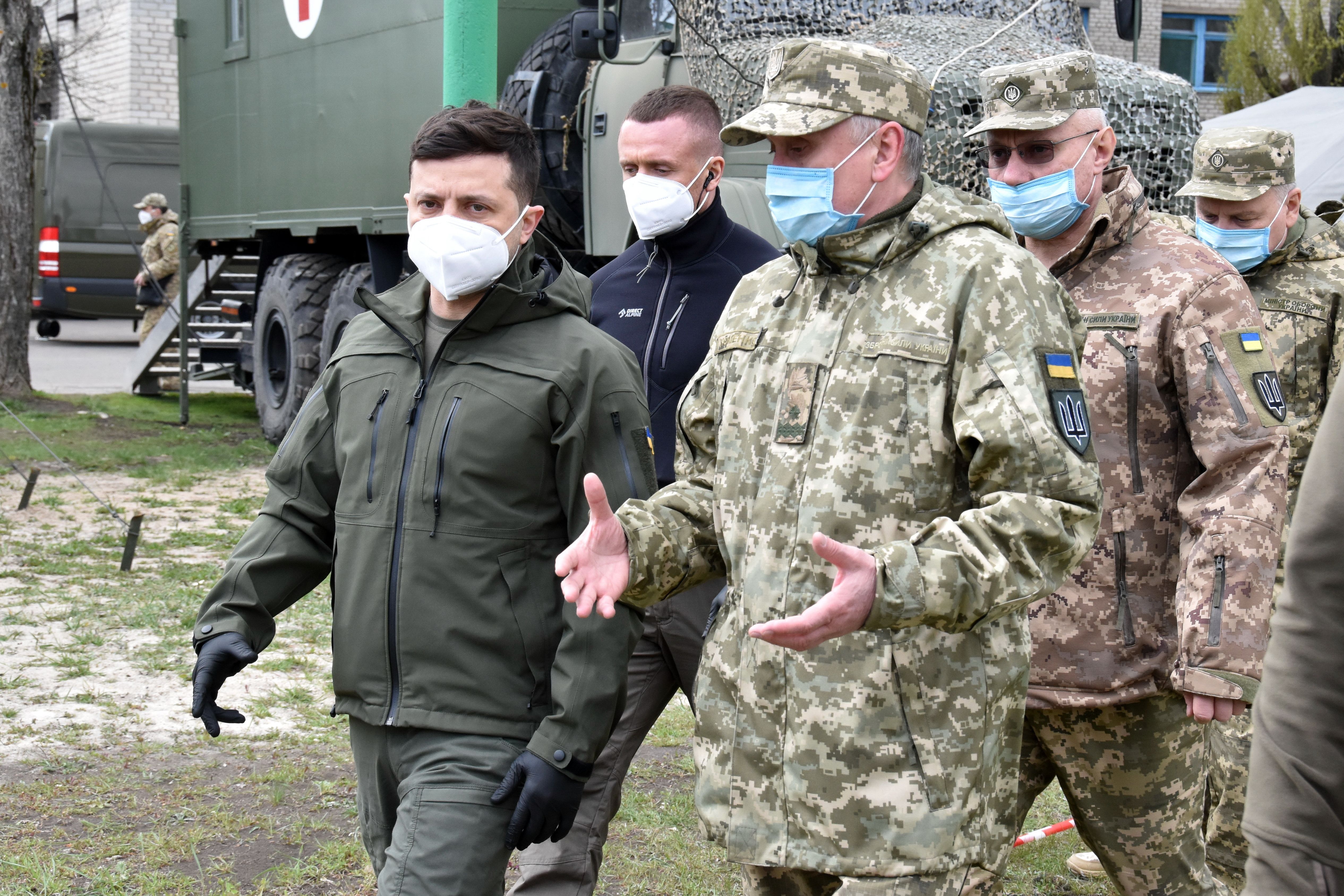Ukraine’s New National Security Strategy

Key Objectives of the NSS
Compared to the previous strategy of May 2015, the new one considers much more broadly the issue of Ukrainian security. Among the current and potential threats are global megatrends (such as climate change, technology development, growing global inequalities), changes in the international order (e.g., U.S.-China rivalry, tensions in European and transatlantic relations), the ongoing Russian aggression, as well as internal problems of the Ukrainian state (including institutional weakness, the low level of social welfare, depopulation). The answer to such a defined catalogue of threats will constitute the updated Ukrainian security policy based on three pillars. The first one is the development of national defence capabilities. The second pillar is strengthening the ability of society and the state to adapt quickly to changes in the security environment, which means adopting for internal purposes the EU and NATO-promoted concept of resilience. The third one involves cooperation with foreign partners with the strategic goal remaining membership in the EU and NATO, which repeats the provisions introduced into the constitution in February 2019.
While the previous NSS emphasised multilateral cooperation (among third countries, only the U.S. and China were mentioned at that time), the new one emphasises primarily bilateral cooperation and therefore sets out a clear hierarchy of partners in the international arena. The priority has been given to the development of strategic relations with the U.S., the UK, Canada, Germany, and France, with the aim to strengthen the Ukrainian sovereignty and security guarantees. Second-level strategic partners include Azerbaijan, Georgia, Lithuania, Poland, and Turkey, with whom Ukraine intends to cooperate on regional security. The presence of Azerbaijan on this list should be seen, among others, in the context of the Ukrainian aspirations to deepen relations with Turkey (Azerbaijan’s ally), as well as close contacts between the current Ukrainian authorities and the Azerbaijani state-owned energy company SOCAR. On the other hand, it is not clear if the absence of any reference to China, currently Ukraine’s largest trading partner—mentioned in the NSS only as economic cooperation with Asian countries—means also in practice a departure from treating China as a strategic partner of Ukraine.
Countering Russian Aggression
Despite the lack of a hierarchy of threats, the NSS content clearly indicates that the main challenge—existential in character for Ukraine—remains Russian policy. The document defines Russia as an aggressor state and draws attention to its multi-faceted actions taken to regain influence in Ukraine, including in political, economic, military, informational, and cyber spheres. To prevent the escalation of the conflict, Ukraine plans to raise the potential costs of the use of force by Russia so that they become unacceptable. This is to be achieved by means of expanding Ukraine’s defence capabilities and maintaining the international community’s pressure on Russia, which represents a change compared to the previous NSS, which emphasised mostly Ukraine’s own ability to deter armed aggression.
The new NSS vaguely touches upon the issue of the restoration of the state’s territorial integrity, only stipulating that Ukraine will do so on the basis of international law. Although this leaves the Ukrainian authorities a lot of room for manoeuvre, assumed should be the primacy of resolving the conflict with Russia through further negotiations since an attempt to regain full control over Donbas by force would risk further Russian military intervention. NSS provisions do not directly exclude such a scenario, though.
The absence of any mention of the Minsk Agreements or the Normandy Format should be seen in a similar context, which means that Ukraine allows the possibility to move away from the existing instruments of settling the situation in Donbas and to seek new, more effective ones. The NSS specifies Ukraine wants to hold negotiations with Russia through the EU, NATO, and OSCE countries. Yet, this does not imply a termination of the bilateral Ukraine-Russian talks, rather constitutes a signal that Ukraine is considering asking for additional help from the U.S. and the UK, as signatories to the Budapest Memorandum. Already in spring 2019, in his presidential campaign, Zelensky declared his desire to involve both countries in the negotiations with Russia.
Development of National Defence Capabilities
The NSS considers as a key element of the state’s military security the development of its own deterrence potential, which is to comprise, first of all, the Ukrainian armed forces (currently about 200,000 troops), a reserve, and reorganised territorial-defence units. The document assumes increasing their combat capabilities through, among others, development of the national defence industry and further reforms based on NATO standards.
The NSS attaches particular importance to the country’s defence industry. To this end, a new position of Deputy Prime Minister for Strategic Industries was established in July. The Ukrainian defence sector is facing a number of problems, resulting, for example, from the need to search for new markets since the start of the Russian aggression. Its further development and replacement of outdated Soviet elements with modern technologies require, above all, significant funding, which can only be covered to a small extent by state budget purchases of armaments (up to a billion euros per year), a large part of which is also wasted due to corruption. The inflow of potential foreign investment will depend on increasing the transparency of the Ukrainian defence sector, including restructuring of the state-owned UkrOboronProm, and further liberalisation of the country’s defence procurement market.
Commentary
The NSS is of a general and declarative nature, providing a starting point for further conceptual work. Its provisions will be developed and concretised in more than a dozen consecutive strategic documents, including the military security strategy, economic security strategy, and—for the first time—foreign policy strategy. The government is to work out these concepts by mid-March 2021, but it is not clear whether all of them would be prepared in that short period, nor to what extent they would be consistent with each other to enable a coordinated response to the Russian aggression in the implementation phase.
The strong stance in the NSS regarding the prospects for relations with Russia contrasts with the non-confrontational rhetoric of President Zelensky and stems from the combined views of the closest circle of the head of state and those of Ukrainian security sector institutions and the local expert community, the latter two being in favour of a more assertive policy towards Russia. Although statements made by President Zelensky indicate that he does not share all the assessments and assumptions made in the NSS, he will refer to it occasionally in reassuring Ukraine’s pro-western course.
The inclusion of Poland by name in the second group of strategic partners does not diminish its importance in Ukrainian foreign and security policy, rather indicates that, in the perception of the Ukrainian authorities, Poland is not able to influence the course of negotiations on the settlement of the situation in Donbas, nor to significantly assist Ukraine in the development of its defensive potential. Further development of the Ukrainian defence industry will inevitably be beneficial for the growth of Polish arms exports to Ukraine as well as for joint production of equipment. Together with Ukrainian partners, Polish companies have already been working on the development of artillery munitions and drone-destruction systems, among others. In the short and medium term, however, an obstacle to deepening bilateral contacts will remain the underinvestment of the Ukrainian defence sector, including too low expenditures on the purchase and modernisation of military equipment in relation to the needs. In this respect, Poland could offer Ukraine a long-term preferential loan for purchasing Polish armaments, following the example of other NATO countries, such as the UK and France.


